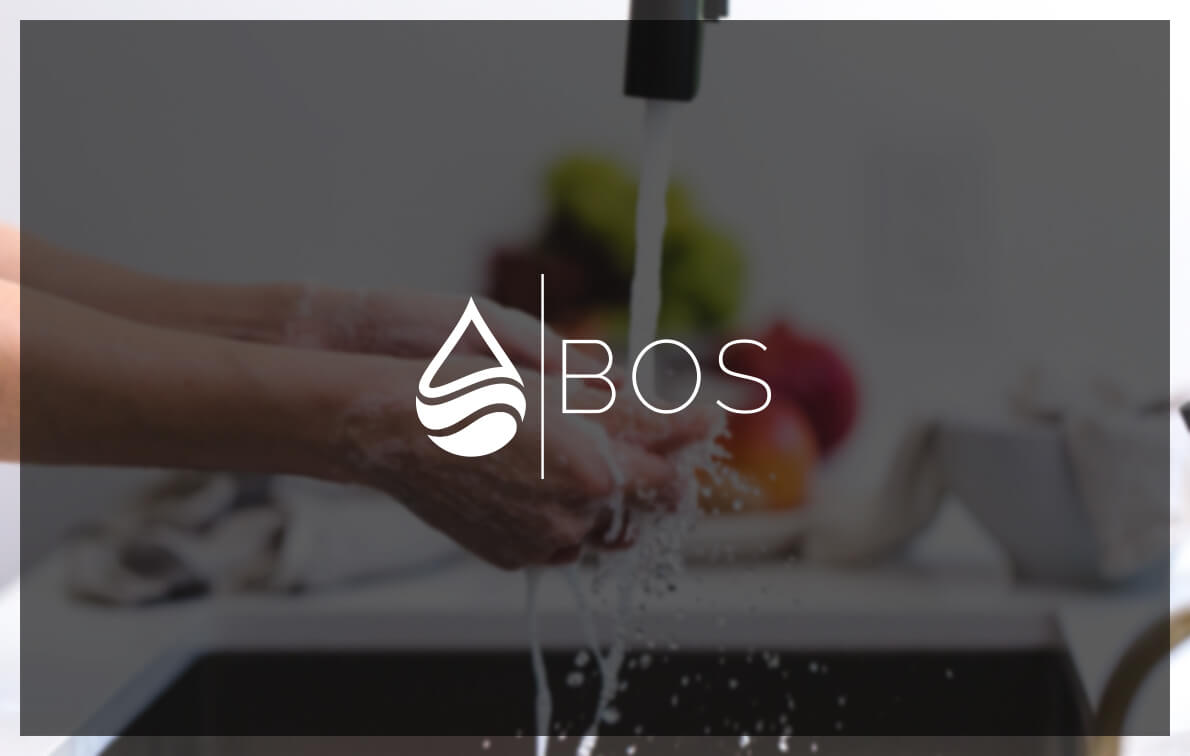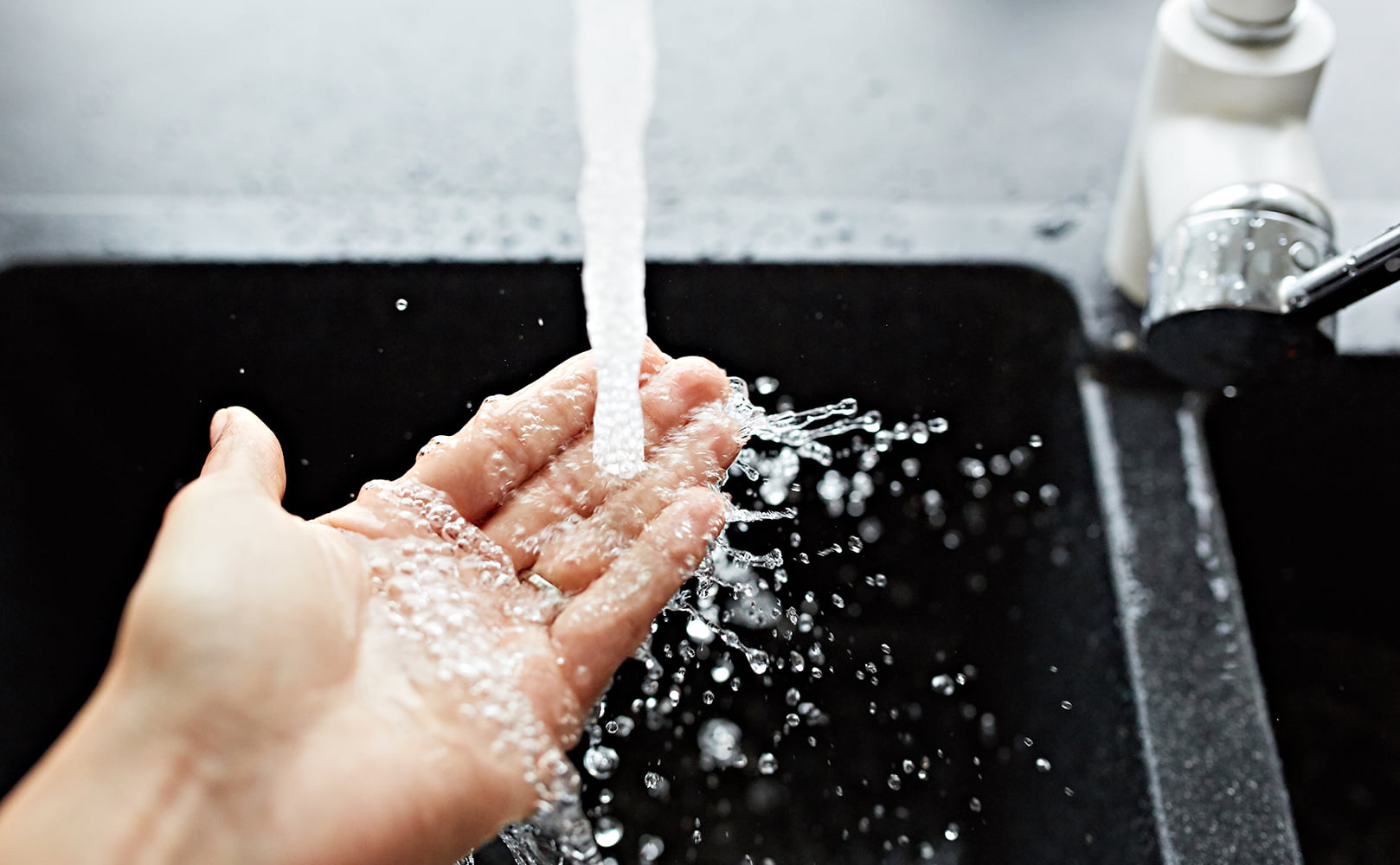BOS Provides Home Water Treatment Advice!
Written by: Gene Fitzgerald // Last Updated: Jan 31, 2024
BOS is all about home water treatment. That’s not only water filtration and softening. It’s also water disinfection, heating, cooling, storing… – the list goes on.
This guide shall provide you with a general introduction to the topic and what you can expect to find on this website.
Water Filtration
Water filtration is our main focus. It is one of the many forms of water purification. It covers physical, biological, and chemical methods to remove undesirable substances from water using a filter medium. Other forms of water purification include sedimentation and distillation, but also chlorination and UV light radiation for disinfection.
The goal of water filtration/purification is usually to produce water safe for human consumption which is also what we are going to discuss here.
What can be removed? It depends on the filtration process, but generally speaking, all kinds of biological contaminants, chemicals, and suspended solids.
Why Filter Your Water in the First Place?
Why should you even bother and filter your home water in the first place? Doesn’t the government regulate public water quality?
Yes, the U.S. Environmental Protection Agency (EPA), an independent institution of the United States federal government responsible for environmental protection, has set national legal limits on more than 90 different contaminants in drinking water – in accordance with the Safe Drinking Water Act (SDWA).
Currently regulated contaminants are
- Microorganisms – For example cryptosporidium, E. coli, and legionella
- Disinfectants – Mainly chlorine and chloramines
- Disinfection byproducts – Such as haloacetic acids (HAA5) and total trihalomethanes (TTHMs)
- Inorganic chemicals – Think arsenic, asbestos, cadmium, total chromium, fluoride, lead, nitrate/nitrite, thallium
- Organic chemicals – Atrazine, benzene, carbon tetrachloride, dichloromethane, Glyphosate, lindane, 2,4,5-TP (Silvex), vinyl chloride, and all kinds of other stuff that no one has ever heard of
- Radionuclides – Lastly, radionuclides like radium 226/228 and uranium
Safe Drinking Water Act? As a federal law, the act was passed to protect public health by regulating public drinking water supplies, which also includes its sources, so lakes and rivers and the like.
In theory, this should protect us against potentially harmful natural and man-made contaminants that can be found in our waters. After all, the legal limit for a certain contaminant reflects the level protecting human health. But it also reflects the manageable level water systems can achieve which is often conflicting.
In other words, public water filtration is also a question of feasibility which boils down to cost. And this is the first problem: Who guarantees that all dangerous substances can indeed be removed from our water supplies at a large scale?
Secondly, even if they can be removed, who says that they will be removed? And this has nothing to do with conspiracy theory either. Sometimes, all that’s needed is human failure. Remember the Flint water crisis? It has shown us that, depending on where you live, there might be contaminants present in your tap water that pose a serious threat to your health.
Let’s recap:
- April 2014 – The city of Flint, Michigan temporarily switches its water supply from the Detroit Water and Sewerage Department to the Flint River. However, officials fail to apply corrosion inhibitors to the new water. As a result, lead from aging pipes leaches into the water supply.
- February 2015 – Flint residents assume there is something wrong with their water that is causing sickness. Unfortunately, they are right. The EPA detects highly elevated levels of lead in Flint tap water. Some residents receive water in their homes with lead levels as high as 5 parts per million. The Maximum Contaminant Level (the legal limit) is only 0.015 ppm, which is 330 times lower.
- October 2015 – Flint finally switches back to Detroit water. It will take weeks, though, for the entire water system to flush properly.
To top it all off, USA Today identified about 2,000 water supplies in all 50 U.S. states where tests have shown severe lead contamination between 2013 and 2016.[1] According to the Detroit Free Press, hundreds of major U.S. cities still have 100% lead piping.[2] And The Guardian found at least 33 cities that have cheated to conceal dangerous levels of lead in their water – enough said.[3]
The next issue is there are many, many contaminants currently unregulated by the EPA. We miss legal limits for more than 160 substances, says the Environmental Working Group.[4] Compare that to the 90 contaminants that made it on the EPA’s list. And even for those the legal limit is often tens or even hundreds of times higher than what up-to-date scientific research suggests.
Or the regulation is simply ineffective as is the case with chromium 6, a metal that is both toxic and carcinogenic in tiny dosages. Currently, there only exists a federal limit for total chromium, so chromium 3 and chromium 6 combined, at 100 parts per billion. Funnily enough, chromium 3 does not even pose a health risk. The California Office of Environmental Health Hazard Assessment (OEHHA) has set their public health goal for just chromium 6 at 0.02 ppb. This is expected to cause no more than one case of cancer in one million people who drink the water for a lifetime.
The last factor we want to mention is water getting contaminated on its way from the treatment utility to your home. In fact, that’s what was causing the lead problem in Flint. The city has had an outdated water system with thousands of service lines containing the heavy metal.
FYI: Before the lead ban in 1986, solder and pipes containing lead were used in public water systems.
The good news, Flint city experts expect to finish replacing all remaining lead lines by mid 2021. The bad news is that too many cities have underfunded water systems.
Bottom line, there are many reasons to filter your water.
But what if you’re on well water? If you have your own private well, you yourself are in charge to ensure the quality of your water is up to standards.
Water Softening, Disinfection, Heating, Cooling, Testing & More
Above, we have only discussed reasons for home water filtration. But as mentioned earlier, we also do water softening, disinfection, heating, cooling, testing, and more.
We haven’t covered every single topic in every possible way yet, but that’s our plan for the future, so stay tuned!
All Review & Comparison Guides At a Glance
Below is a list of all the review & comparison guides published on BOS so far:
- 10 Best Fluoride Water Filters (*Update 2024)
- 10 Best Whole House Water Filters for Well Water (*Update 2024)
- 11 Best Water Filters (*Update 2024)
- 11 Best Whole House Water Filter Systems (*Update 2024)
- 12 Best Shower Filters (*Update 2024)
- 14 Best Water Filters for Lead Removal (*Update 2024)
- 3 Best Stainless Steel Water Filter Pitchers (*Update 2024)
- 5 Best Whole House Water Filter and Softener Combos *Update 2024
- 6 Best Countertop Reverse Osmosis Systems (*Update 2024)
- 6 Best Glass Water Filter Pitchers (*Update 2024)
- 6 Best Water Filters to Remove Arsenic (*Update 2024)
- 6 Best Whole House Reverse Osmosis Systems + Commercial *Update 2024
- 7 Best Chloramine Water Filters (*Update 2024)
- 7 Best Chromium 6 Water Filters (*Update 2024)
- 7 Best Countertop Water Filters (*Update 2024)
- 7 Best Electric Tankless Water Heaters (*Update 2024)
- 7 Best Fluoride Water Test Kits (*Update 2024)
- 7 Best Gravity Water Filters (*Update 2024)
- 7 Best Iron Filters for Well Water (*Update 2024)
- 7 Best Reverse Osmosis Systems (*Update 2024)
- 7 Best UV Water Purifiers (*Update 2024)
- 7 Best Water Filters for Chlorine (*Update 2024)
- 7 Best Water Softeners for Well Water (with Iron) *Update 2024
- 8 Best Faucet Water Filters (*Update 2024)
- 8 Best Lead Water Test Kits (*Update 2024)
- 8 Best Salt-Free Water Softeners (*Update 2024)
- 8 Best Water Conditioners (*Update 2024)
- 8 Best Water Distillers (*Update 2024)
- 8 Best Water Filter Dispensers (*Update 2024)
- 8 Best Water Filter Pitchers (*Update 2024)
- 9 Best Under Sink Water Filter Systems (*Update 2024)
- 9 Best Water Softener Systems (*Update 2024)
Spreading the Word!
Finally, if you like what we do please spread the word and recommend BOS to your friends, family members, and colleagues. We count on you and appreciate your support!
Yours sincerely,
The BOS Team
References
- [1] https://www.usatoday.com/story/news/2016/03/11/nearly-2000-water-systems-fail-lead-tests/81220466/
- [2] https://www.freep.com/story/news/local/michigan/flint-water-crisis/2016/02/27/lead-water-lines-lurk-unknown-many-cities/80551724/
- [3] https://www.theguardian.com/environment/2016/jun/02/lead-water-testing-cheats-chicago-boston-philadelphia
- [4] https://www.ewg.org/tapwater/state-of-american-drinking-water.php
- [5] https://www.govinfo.gov/content/pkg/FR-1998-08-19/pdf/98-22056.pdf



